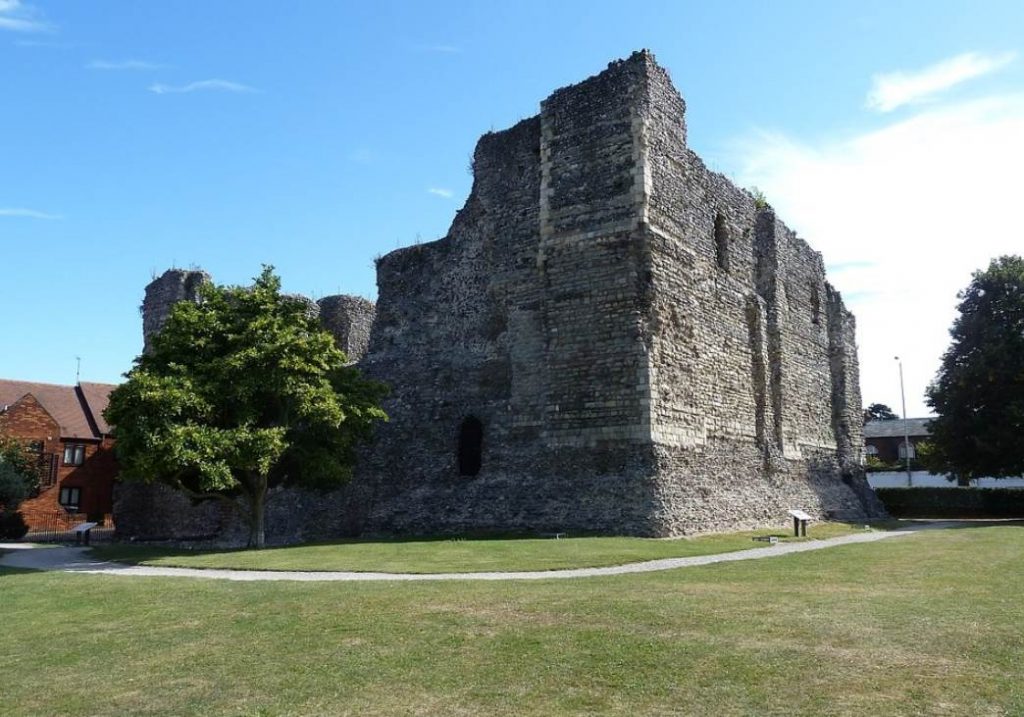England is full of amazing castles full of history that are worth a visit, and in this post, we have created the ultimate list of the most famous castles in England.
Please note, this list only includes castles located within England, we also have a list of famous castles in Europe.
1. Windsor Castle
Windsor Castle is located in the English county of Berkshire, just outside of London. It was built shortly after the Norman Conquest of England in 1066.
It was William the Conqueror himself who built it as part of a defensive strategy to construct motte and bailey castles around London.

Windsor Castle is one of the oldest and biggest royal residences in the world and has been used as a royal residence and a venue for entertaining international state visitors for multiple centuries.
Right now, it serves as one of the preferred weekend residences of Queen Elizabeth II and is a very popular tourist attraction as well.

2. Warwick Castle
Warwick Castle is another castle that was built just 2 years after the Norman Conquest in the year 1068 by William the Conqueror.
The original castle was made of wood and has been replaced over the centuries by stone fortifications. It’s located in Warwick, the county town of Warwickshire in the West Midlands.
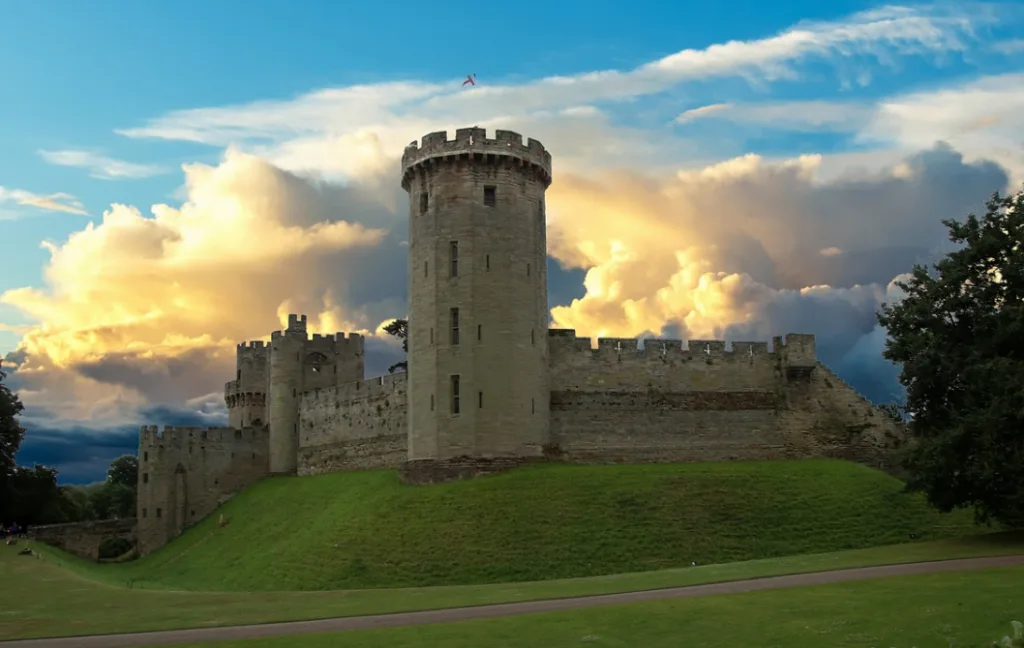
The castle had been owned by the Earls of Warwick until it was sold to the Tussauds Group in 1978, an entertainment company best known for its wax statue museums. This company was later merged with Merlin Entertainment.
It was eventually sold again to Nick Leslau’s investment firm Prestbury Group, and Merlin Entertainment is managing the castle with a 35-year lease agreement.
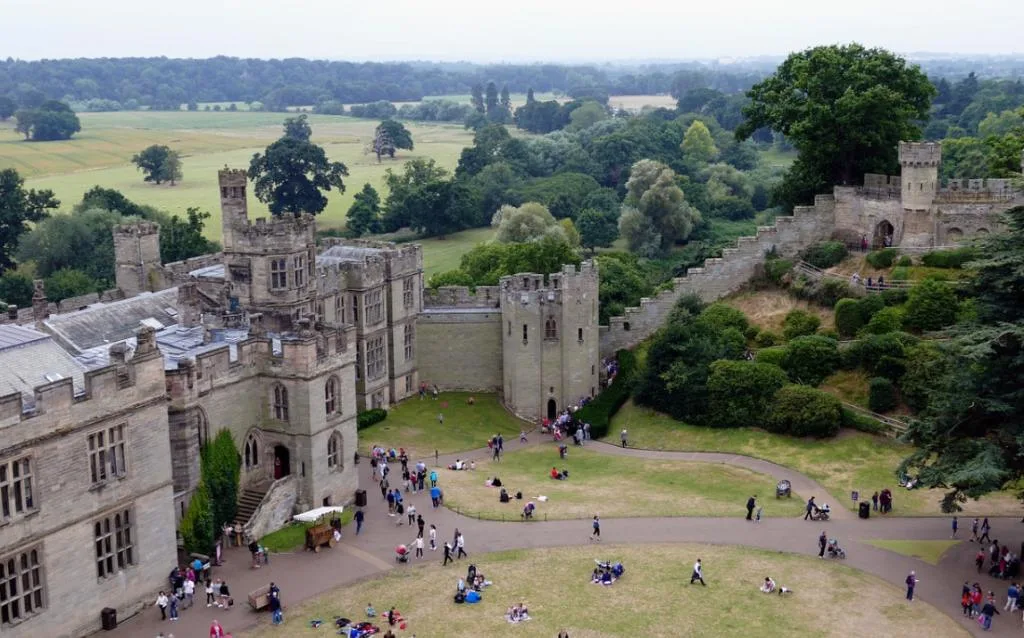
3. Alnwick Castle
Alnwick Castle is a castle and country house which is owned by and serves as the seat of the 12th Duke of Northumberland in the north of England.
It was also built shortly after the Norman Conquest of England and served as an important form of defense against invasions from the Scots.

Apart from serving as a popular tourist attraction together with the adjacent “Alnwick Garden,” it is the second-largest inhabited castle in England (after Windsor Castle).
The Duke of Northumberland only occupies part of the castle, the rest of the castle is open to the public during the summer.
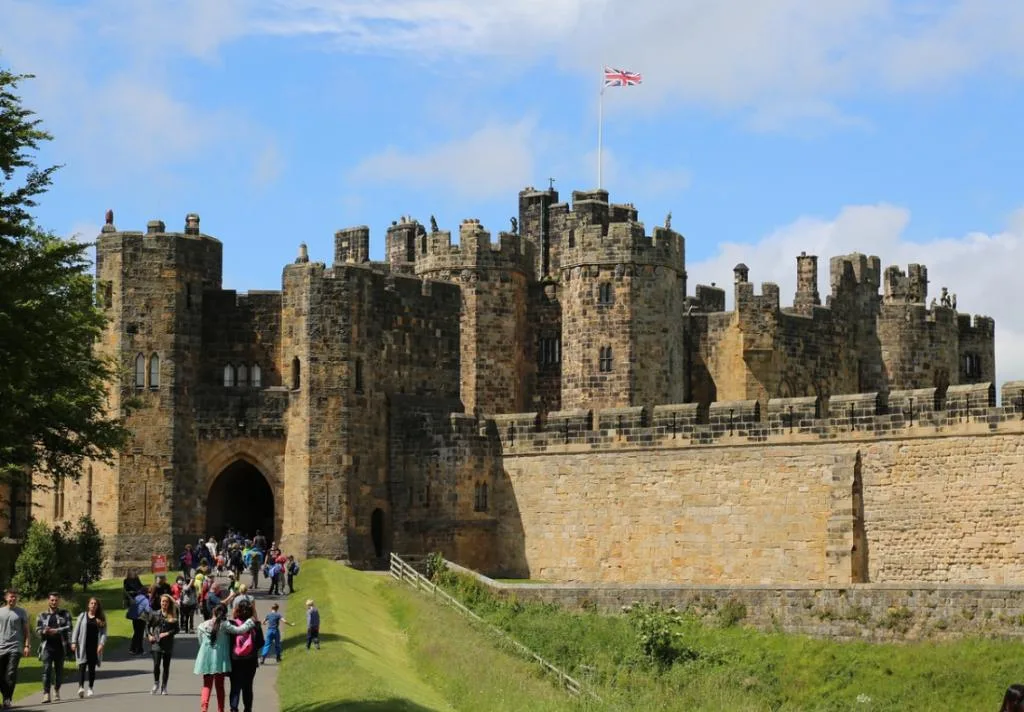
4. Dover Castle
Dover Castle is one of the most important castles in English history, mainly because of its strategic location. The 11th century Dover Castle has been described as “The Key to England.”
Apart from its strategic location, it’s also famous for its size, as it’s contested whether or not Dover Castle or Windsor Castle is the actual biggest castle in England.
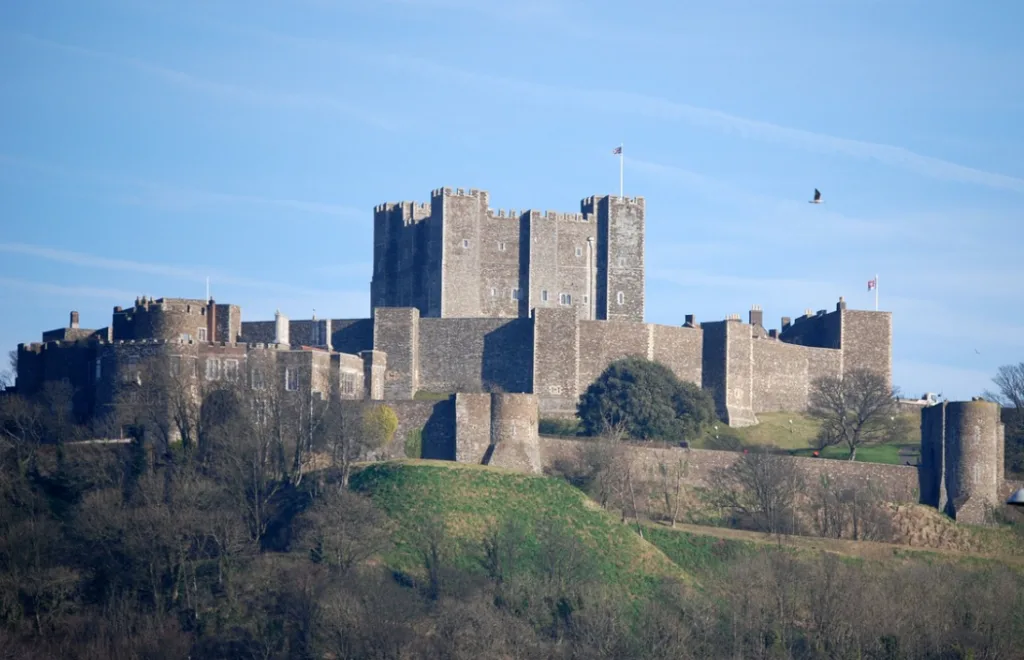
Dover Castle not only served as an essential line of defense from invasions of England in medieval times but was also a crucial command post during World War II,
The most significant was during the evacuation of British soldiers from Dunkirk during operation “Dynamo.”
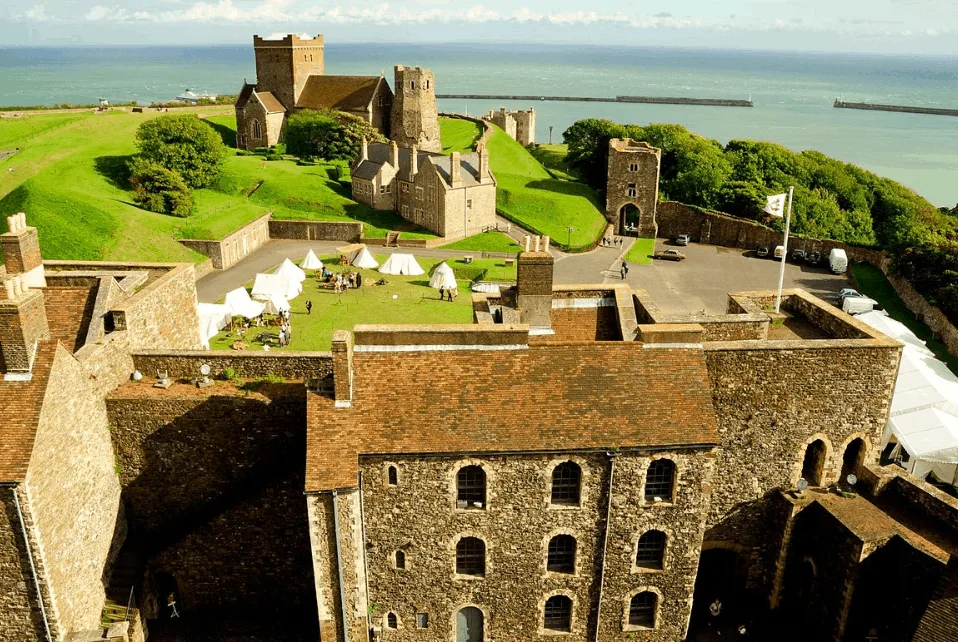
5. Bamburgh Castle
Bamburgh Castle is located on the northeast coast of England in the northern county of Northumberland. There used to be an ancient fort in its current location which was destroyed by the Vikings in the year 993.
The Normans built the castle on the site which still forms the core of the castle today. It became the property of the English Monarch in the year 1095.

The original castle has been restored multiple times after it had deteriorated, most significantly during the 17th century.
The castle was eventually bought by Victorian industrialist William Armstrong who completely renovated it. It is still owned by the Armstrong family and the castle is open to the public.
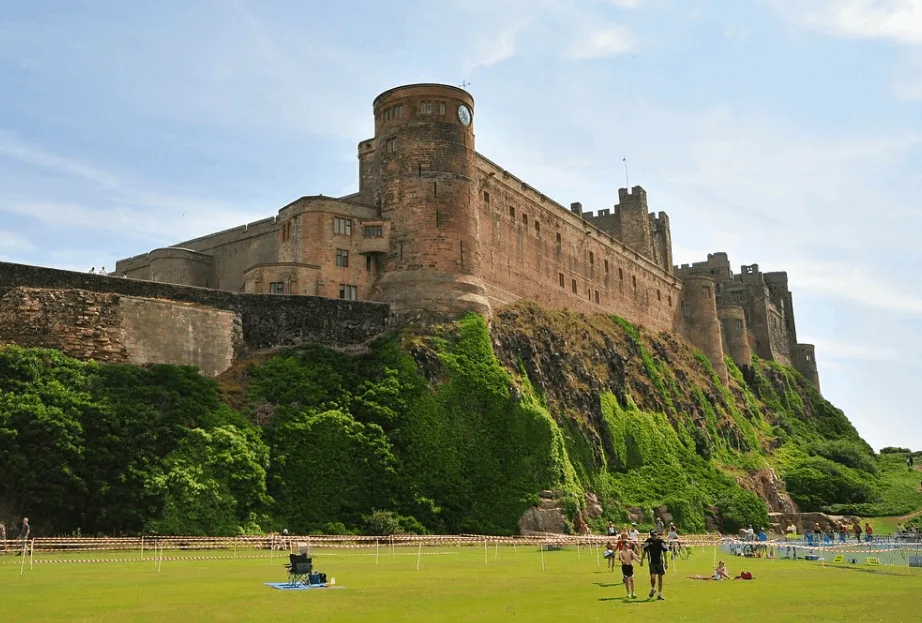
6. Leeds Castle
Leeds Castle was built on an island formed in the River Len, near the village of Leeds in Kent, southeast England.
A stone fortification has existed on the site since at least the year 1119 and it served as a military post at the time that a Norman invasion of England seemed inevitable.
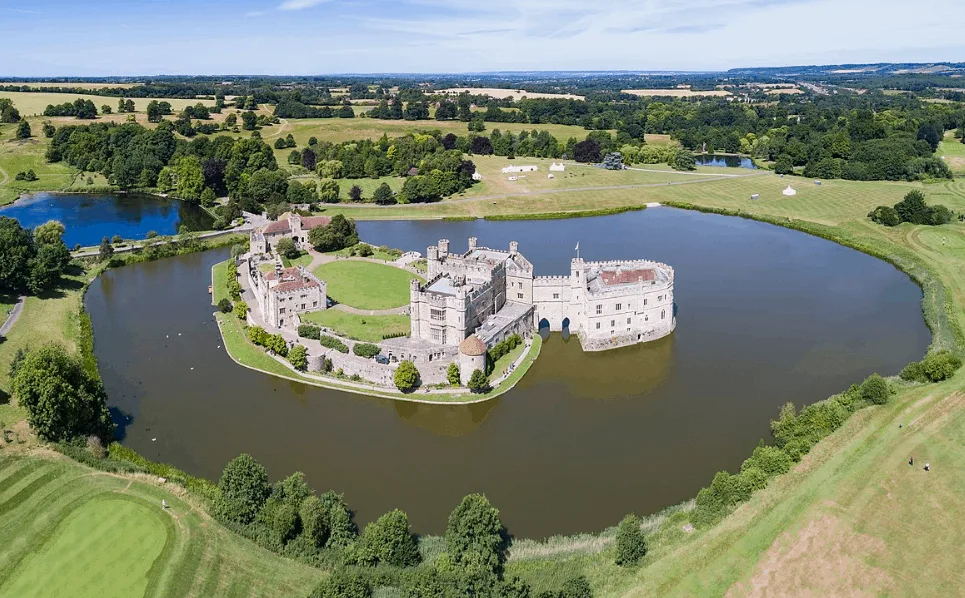
The present castle was for the most part constructed in the 19th century and saw huge renovations at the hands of Lady Baillie, a rich American heiress.
It has been the setting for many important international meetings and is right now a popular tourist attraction.
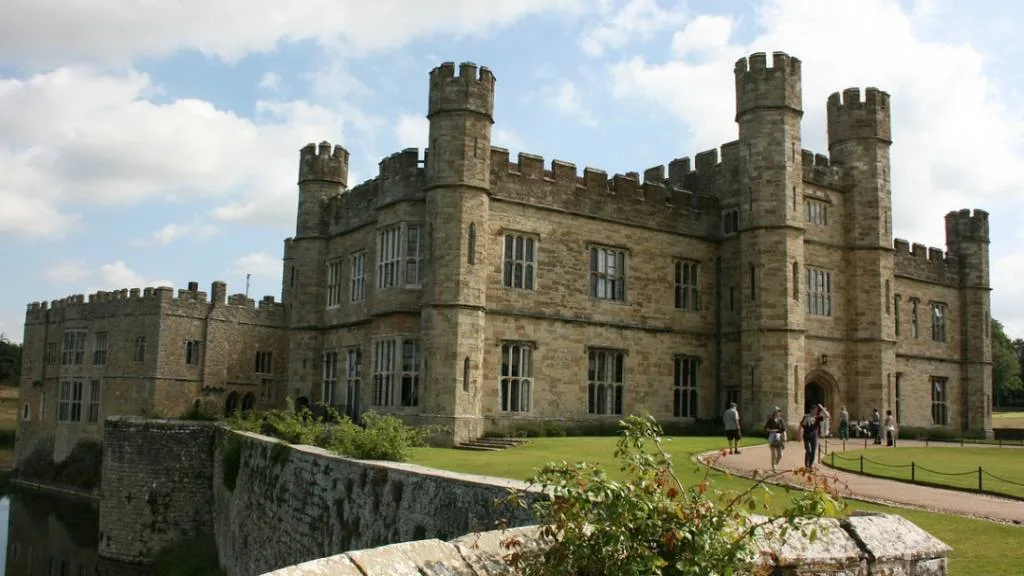
7. Bodiam Castle
Bodiam Castle was built in the 14th century and is located near the town of Robertsbridge in East Sussex, in the southeast of England.
While it served as a defense against invasions from the French, it was also built with design in mind.
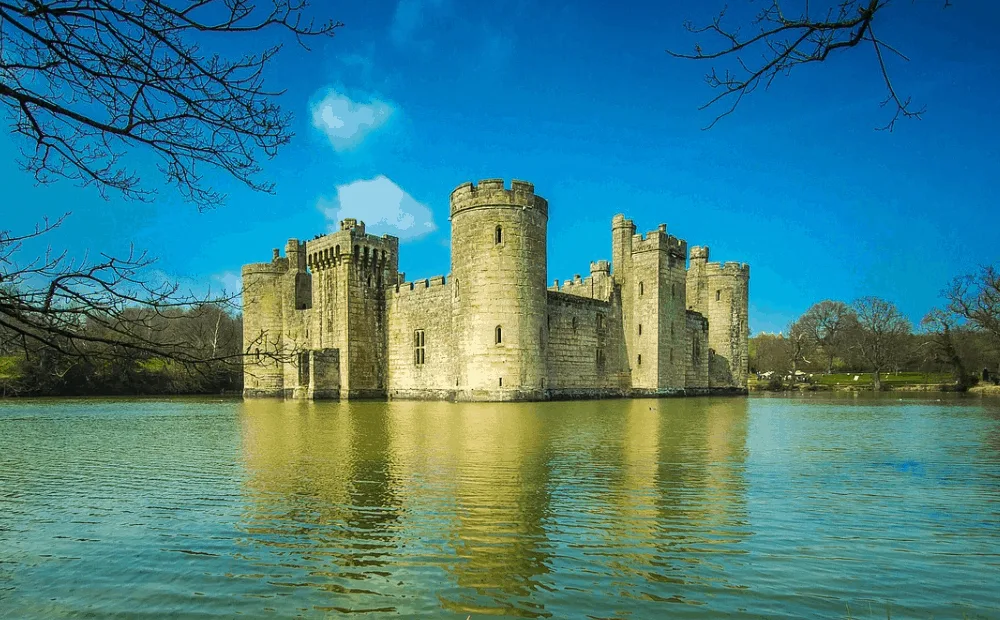
The castle had been dismantled and became a ruin after the English Civil War until it was purchased by Lord Curzon.
Lord Curzon completely restored the castle and left it to the National Trust for Places of Historic Interest or Natural Beauty upon his death in 1925. The castle is now open to the public.
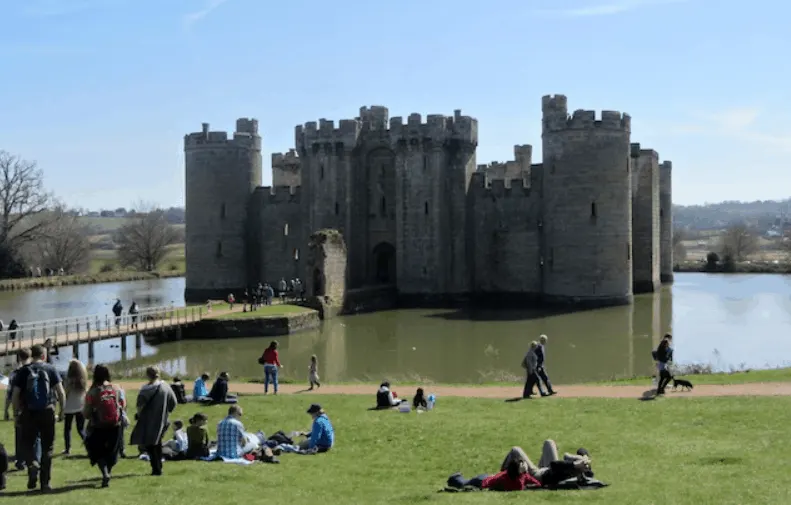
8. Warkworth Castle
Warkworth Castle was built in the English county of Northumberland. The village and castle are located just one mile east of the English coast in the north of the country. They both occupy a loop of the River Coquet.
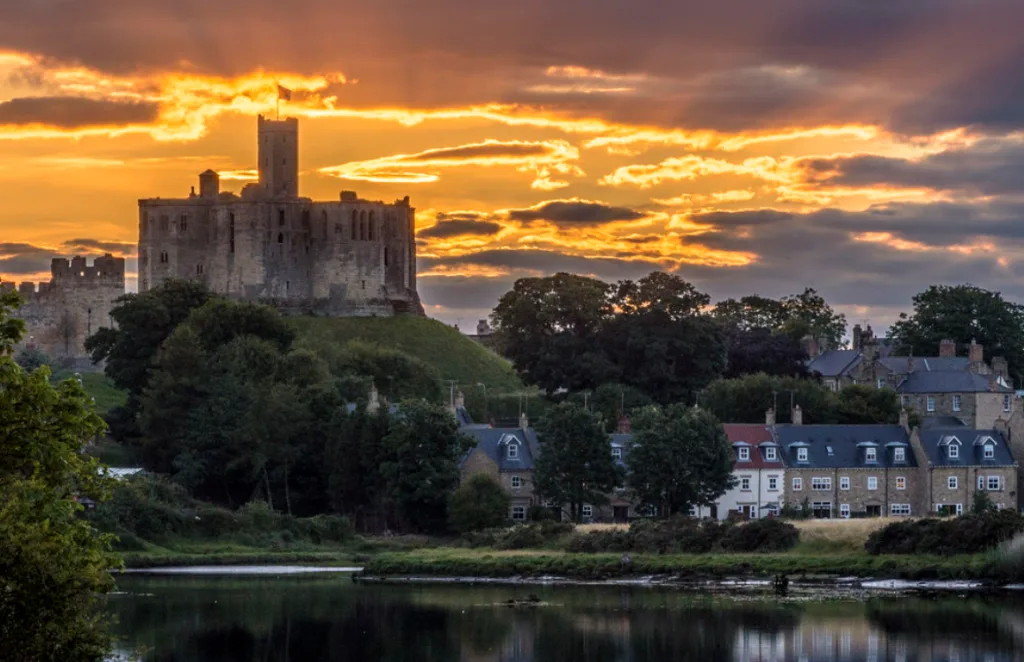
It’s believed that the castle was built by Prince Henry of Scotland, Earl of Northumbria, in the mid-12th century, even though it’s also possible that it was built by King Henry III.
The castle has been under the guardianship of the Office of Works followed by National Heritage and is still owned by the 12th Duke of Northumberland.
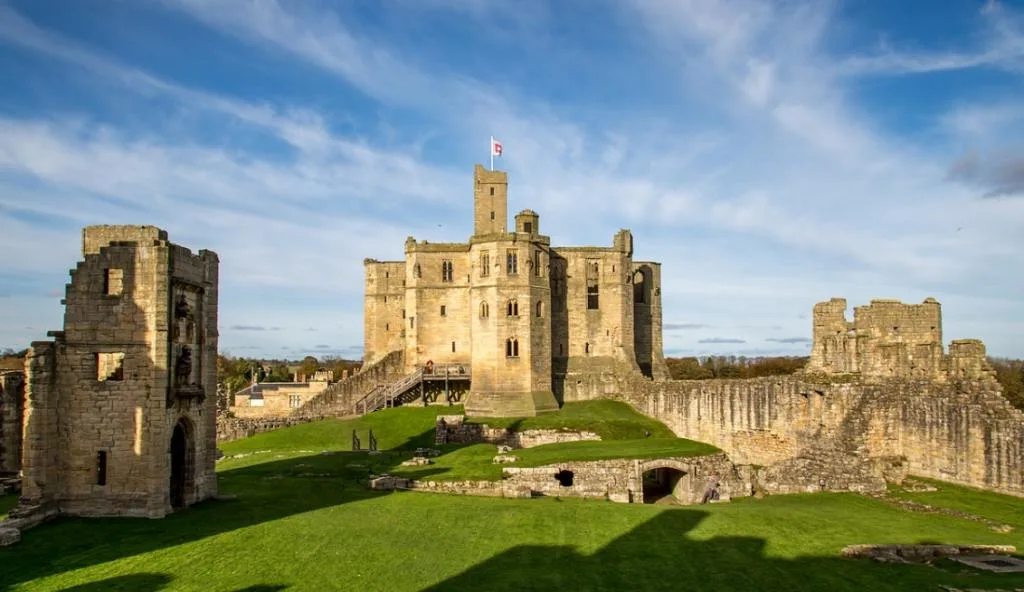
9. Carisbrooke Castle
Carisbrooke Castle is located in the village of the same name which is located on the Isle of Wight in the south of England.
The castle was constructed starting in the 12th century, even though there used to be a Roman fort and Anglo-Saxon stronghold in the same location earlier.
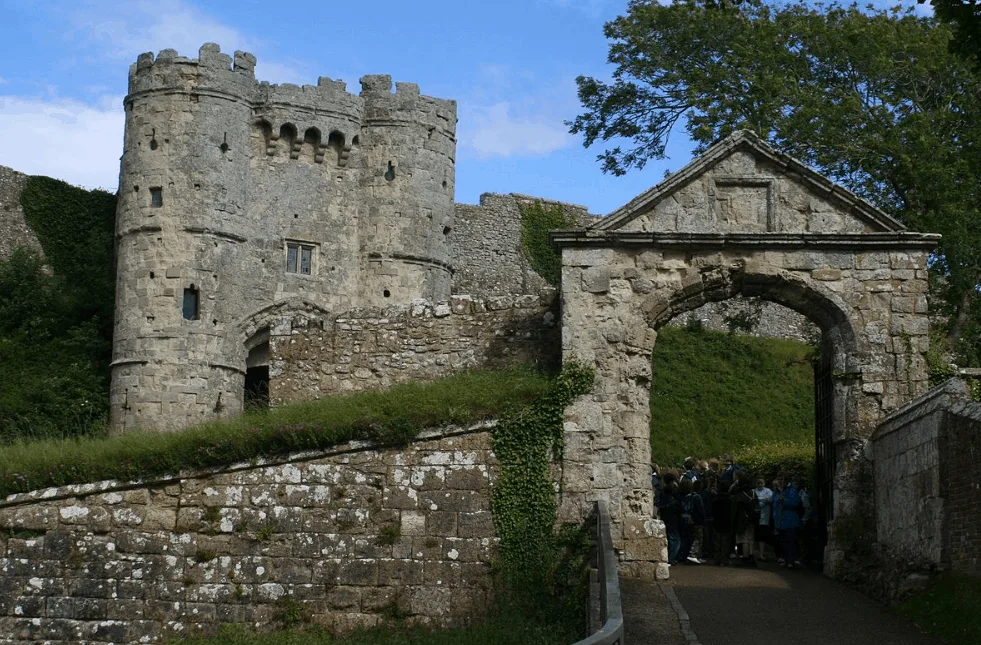
One of the most notable events in the history of the castle was the imprisonment of Charles I just before he was executed in 1649.

10. Rochester Castle
Rochester Castle was built on the east bank of the River Medway in the town of Rochester in Kent, in the southeast of England.
One of its most significant features is the 12th-century keep which is one of the best-preserved keeps in all of England.
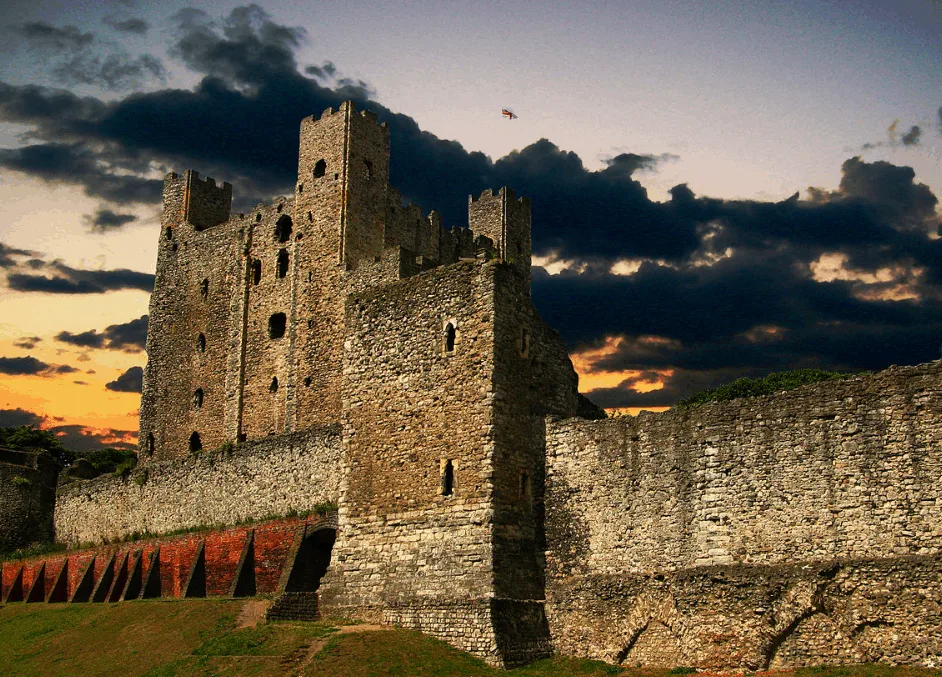
Another remarkable feature is that it didn’t see any military action after the year 1381 when it was severely damaged during the Peasants’ Revolt.
Repairs have been carried out during the 18th and 19th centuries and the castle has been open to the public since the year 1870.
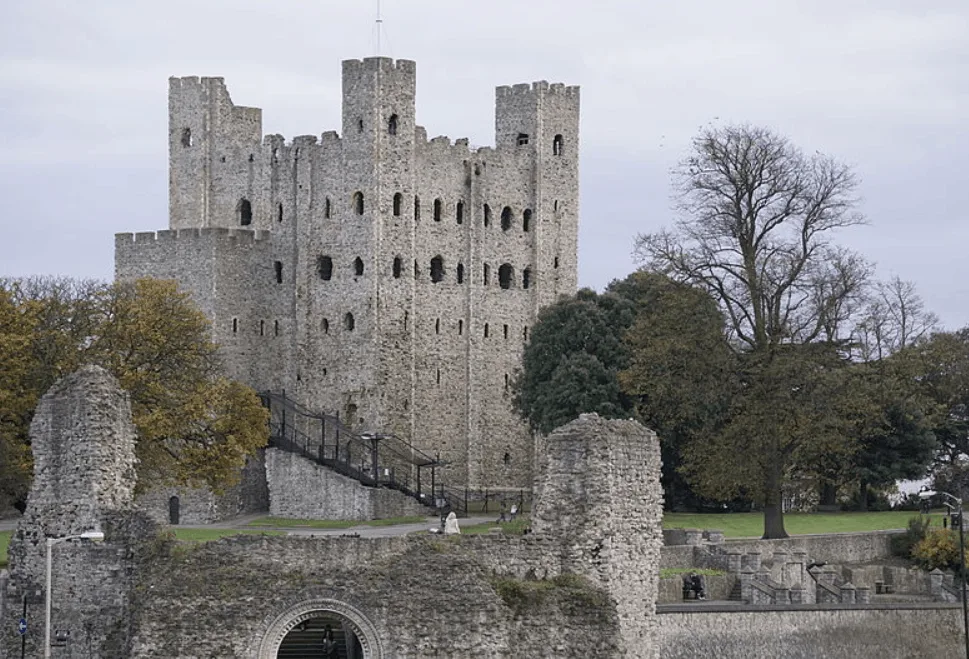
11. Lincoln Castle
Lincoln Castle is another castle that was constructed shortly after the Norman Conquest in the late 11th century.
On the site, there was a pre-existing Roman fortress and Lincoln Castle has been built on top of its ruins by William the Conqueror.

The castle has two mottes and has also served as both a prison and a court. The Crown Courts are still active within the castle up until today.
Lincoln Castle is one of the best-preserved castles in all of England and is, together with Lincoln Cathedral, open to the public.
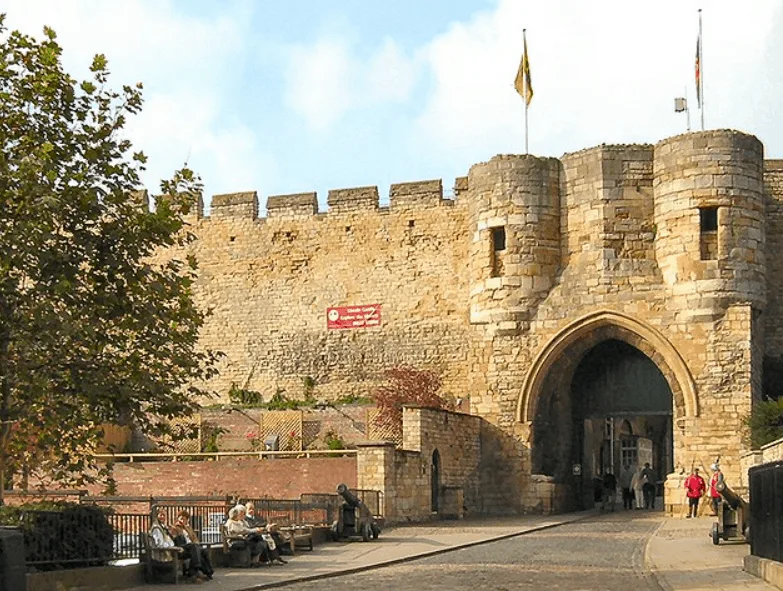
12. Colchester Castle
Colchester Castle is another Norman Castle built in the 11th century and is located in Colchester in Essex, in the southeast of England.
It was built on top of the foundations of a Roman temple and the keep of the castle is mostly intact. The keep of the castle is one of the largest keeps ever constructed.
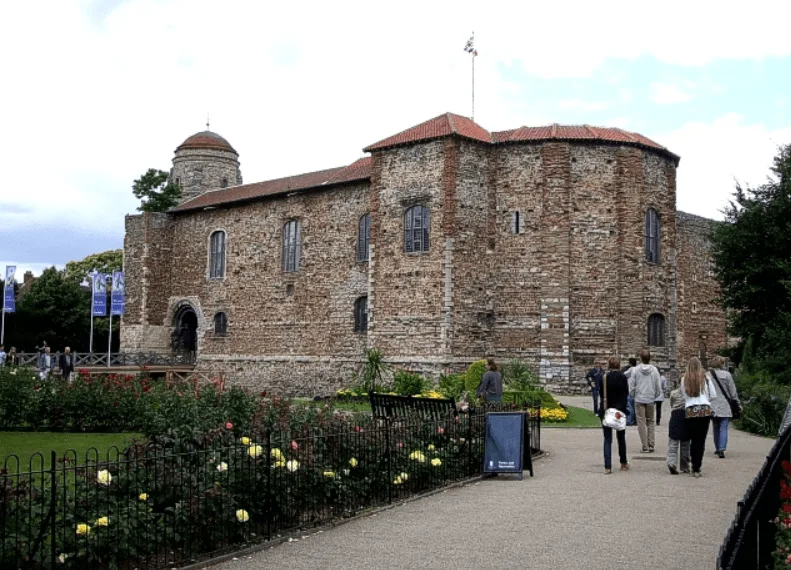
The curtain walls of the castle have been demolished in the 17th century and what remained of the building was used as a prison at the time.
The castle has been the location of the Colchester Museum since 1860 and houses a large number of Roman artifacts.
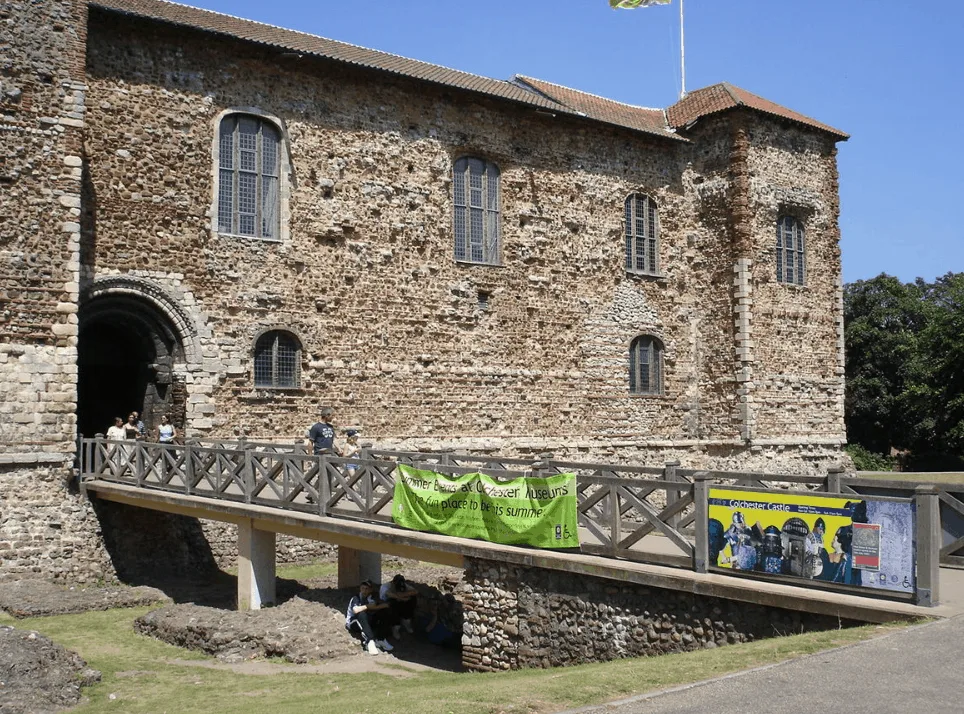
13. Durham Castle
Durham is the county town of the county of Durham in the northeast of England and is home to both a cathedral and a Norman Castle called Durham Castle.
Before it became the home of the University of Durham in 1837, it was the home of the Bishop of Durham.
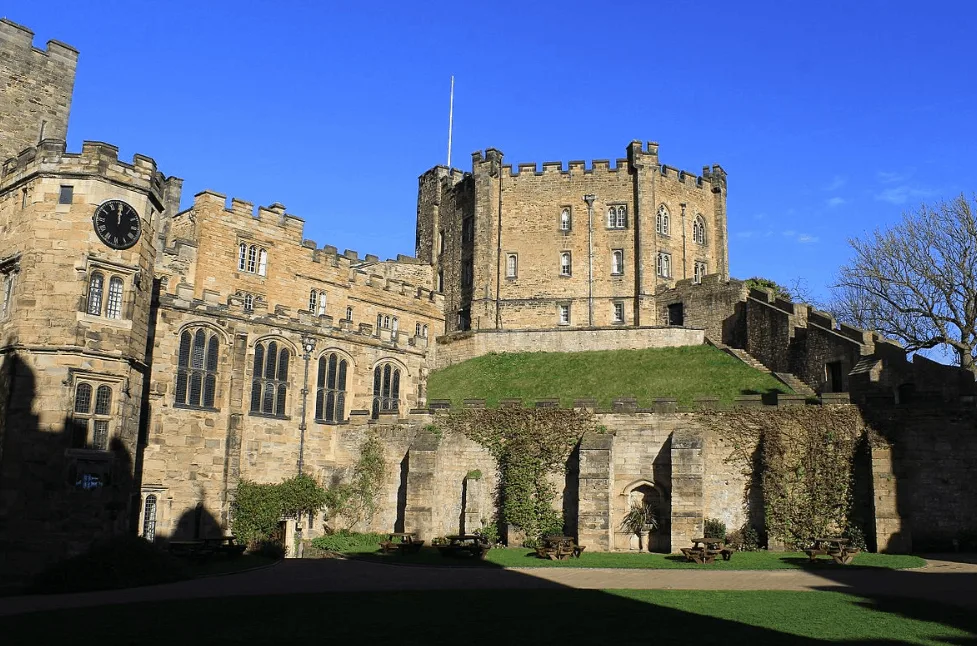
The castle is only open to guided tours because it’s still being used by the University of Durham and houses approximately 100 students.
The castle stands majestically on a hill overlooking the River Wear and opposite the Cathedral of Durham.

14. Oxford Castle
Oxford Castle was originally a moated wooden castle that was built shortly after the Norman Conquest of England.
It’s located in Oxford, a university city in Oxfordshire, a county in the southeast of England.

The stone fortification that was built in the 12th and 13th centuries was destroyed during the English Civil War.
The remaining buildings were then used as a prison which was completely rebuilt in the 18th century. This prison was eventually closed in 1996 and has been redeveloped as a hotel and tourist attraction.

15. Berkeley Castle
Berkeley Castle is located in the town of Berkeley, Gloucestershire, in the southwest of England.
The original castle was constructed in the 11th-century but was completely redesigned by the Berkeley family in the 12th century, and has since been owned by them.
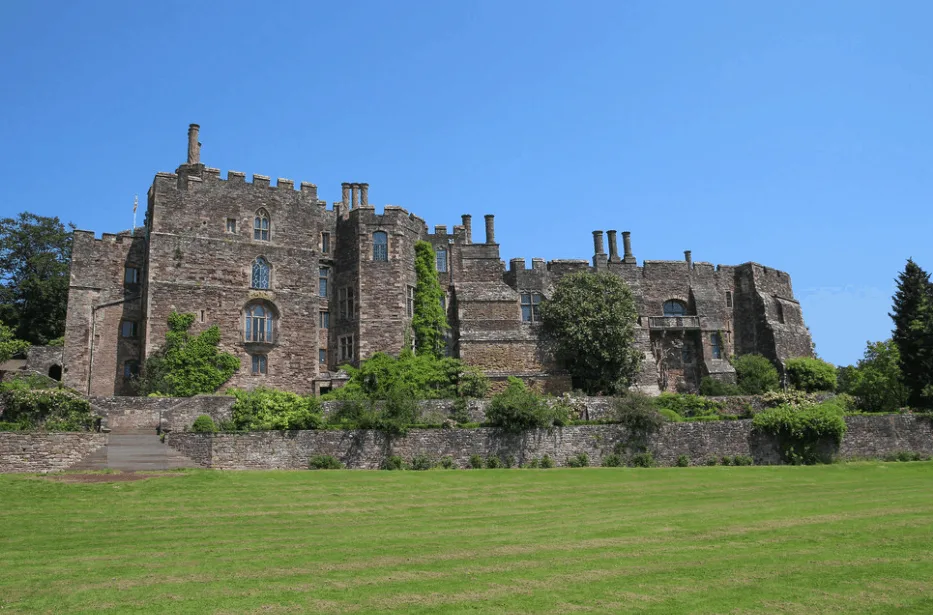
The Berkeley family just lost ownership of the castle for a short period during the Tudor Period.
One of the most notable events in the castle’s history is that it’s believed to have been the location of the murder of King Edward II in the year 1327.
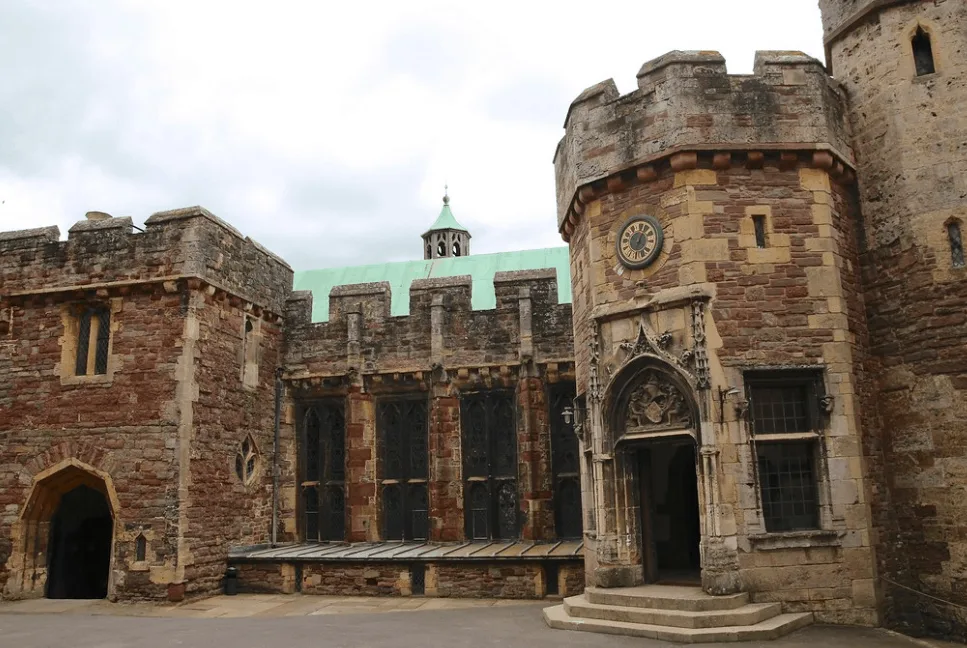
16. Lewes Castle
Lewes Castle was built in the town of Lewes in East Sussex in the southeast of England.
It’s one of the very few castles in England which was built with two mottes, a feature only shared with Lincoln Castle.

The original castle and its two mottes were completed in the late 11th century and have become an important archaeological site in the 19th and 20th centuries.

17. Ludlow Castle
Ludlow Castle is a castle built in a town of the same name in the county of Shropshire, in the west of England.
It stands on a raised area overlooking the River Teme and was built shortly after the Norman Conquest of England.

It’s believed that Ludlow Castle was one of the first castles in England to have been built completely in stone.
The castle has since seen a long history of changes in ownership and expansions, which reflects in the multiple styles used for its construction.
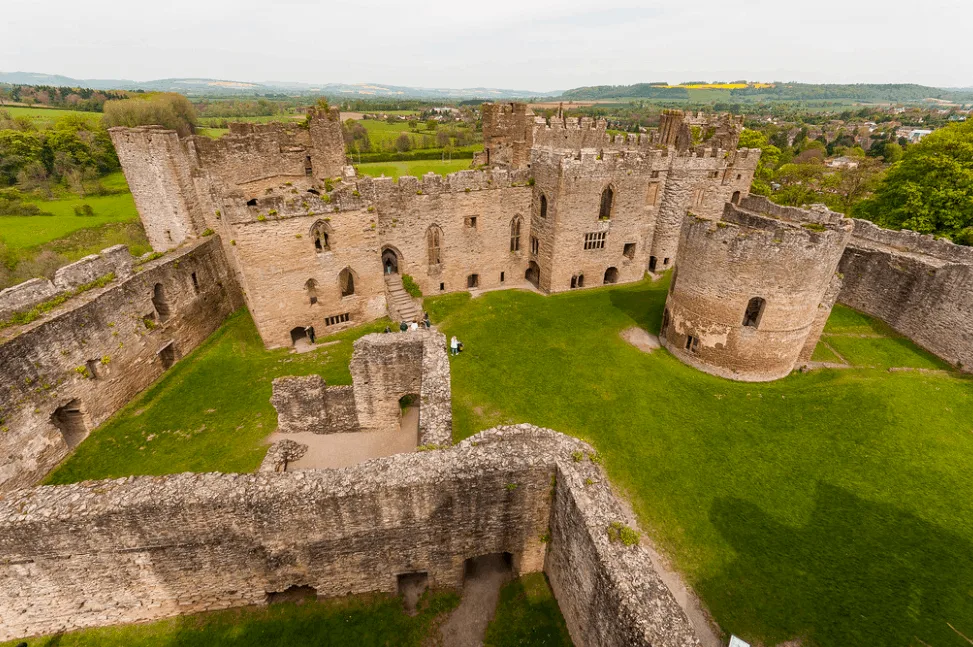
18. Raby Castle
Raby Castle was built near the town of Staindrop in the County of Durham in the northeast of England.
The castle was built by John Neville, 3rd Baron Neville de Raby, between approximately 1367 and 1390.

The castle remains in private ownership and very few of its interior features have been made public.
It remains the seat of the Vane family, the Barons Barnard, and has seen considerable renovations and extensions.
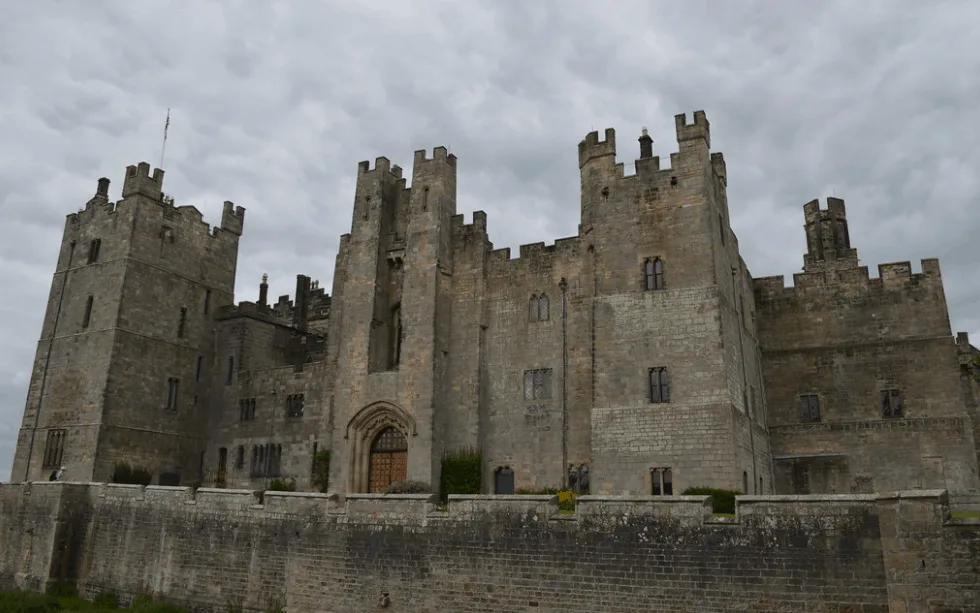
19. Lancaster Castle
Lancaster Castle was built in the town of the same name in the county of Lancashire, in the northwest of England.
It’s not exactly known when the original castle was founded, but it’s assumed it was built shortly after the Norman Conquest in the 11th century on top of an ancient Roman fortification.

The castle is overlooking a crossing of the River Lune, and it was severely damaged by the Scots in the 14th century.
In modern times, the castle has served as both a court of law and prison and has recently been returned to the Duchy’s ownership by the Ministry of Justice. A lot of renovations are ongoing to open up more of the castle to the public.

20. Dudley Castle
Dudley Castle is located in the so-called “capital of the black country” in the West Midlands, just west of Birmingham. It was built on top of a limestone outcrop that was heavily quarried during the Industrial Revolution.
This hill is referred to as “Castle Hill” and lies on the edge of the town center of Dudley.
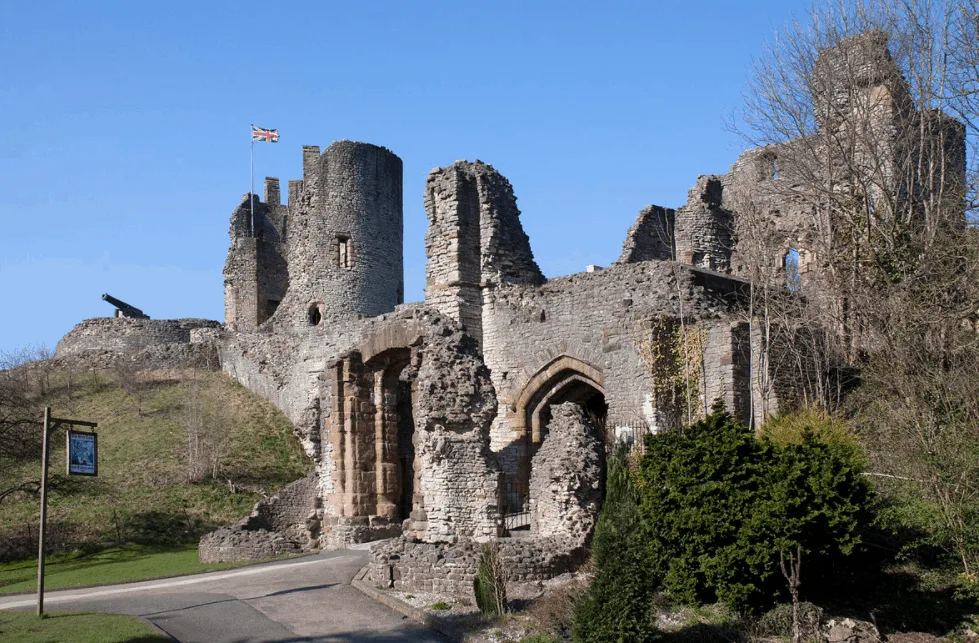
It has been demolished several times and rebuilt in its extended history as the original castle was built shortly after the Norman Conquest of England.
Some of the most prominent remaining buildings are referred to as the “Sharington Range” which was constructed halfway through the 16th century. The Dudley Zoo is located within the castle’s compound as well.
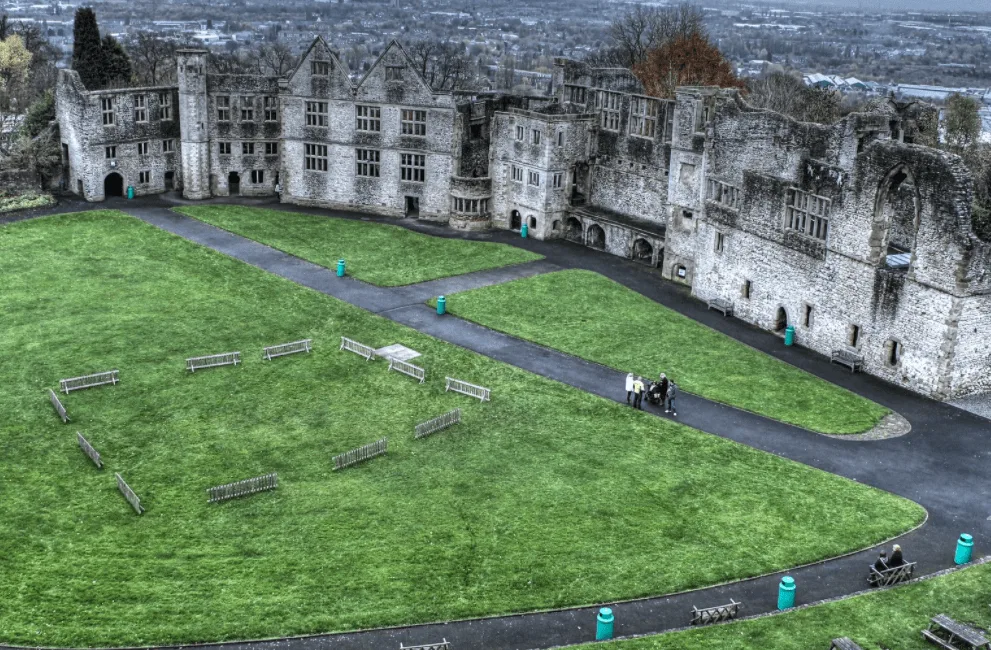
21. Tower Of London
One of the most famous and most important castles in English history is the Tower of London, located in the London Borough of Tower Hamlets.
It’s one of the many castles that was built to fortify the city of London by William the Conqueror in the second half of the 11th century.
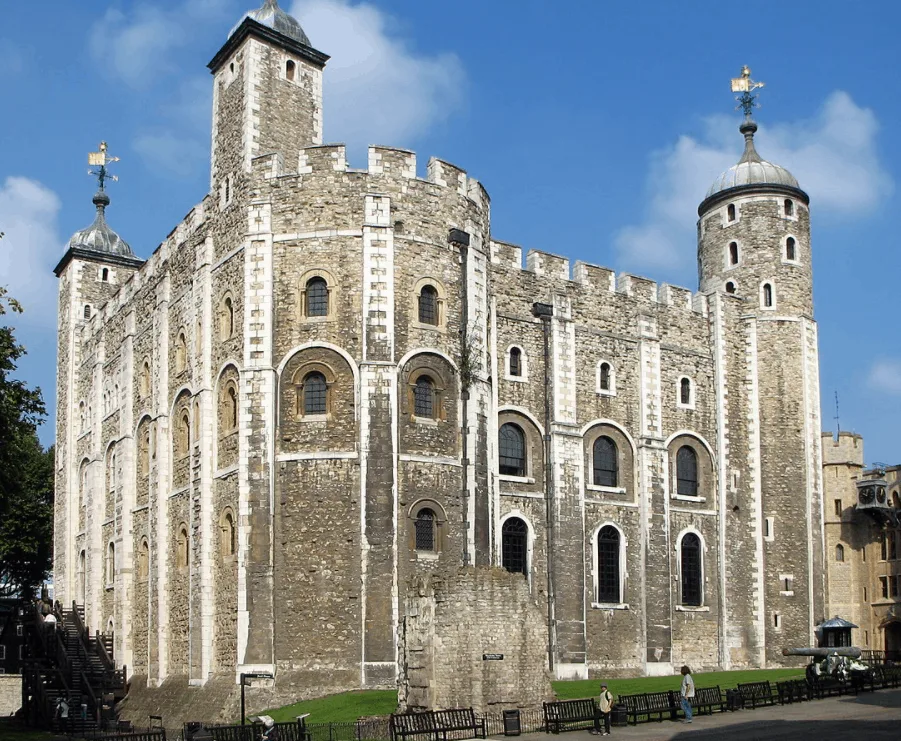
Its most prominent feature is the White Tower after which the castle was named and of which construction started in the year 1078. The castle has served numerous purposes in its long history
It’s not only designated as a UNESCO World Heritage Site but is also one of the most popular tourist attractions in the city of London with nearly 3 million yearly visitors.
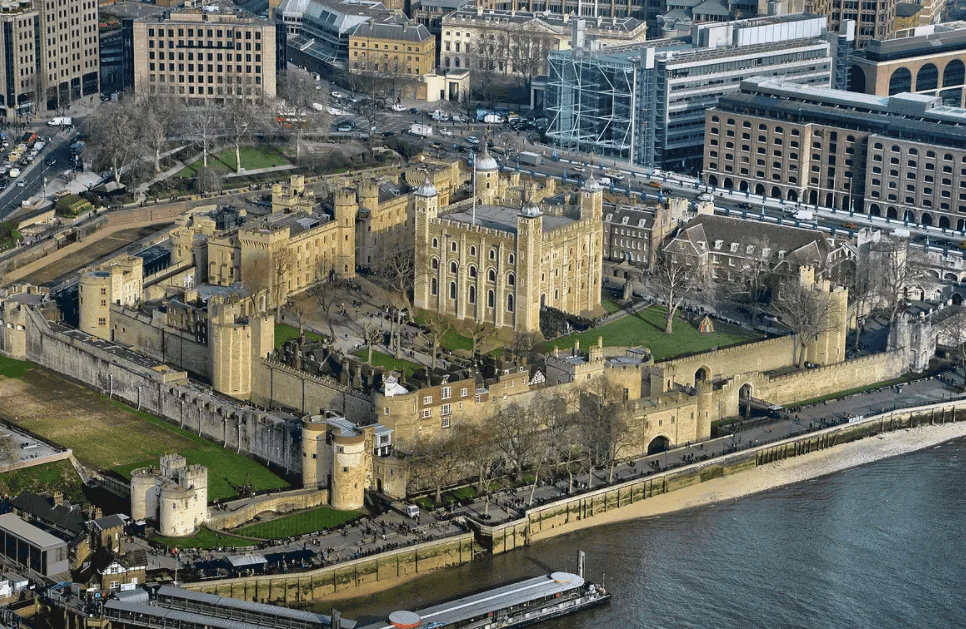
22. Lindisfarne Castle
Lindisfarne Castle is located on a tidal island called “Holy Island” just off the coast of Northumberland in the northeastern part of England. It was built in an elevated position on this small island.
Even though it was only completed in the early 1570s, it replaced a monastery that was located on the island before called “Lindisfarne Priory.” The remains of this building are still on the island as well.
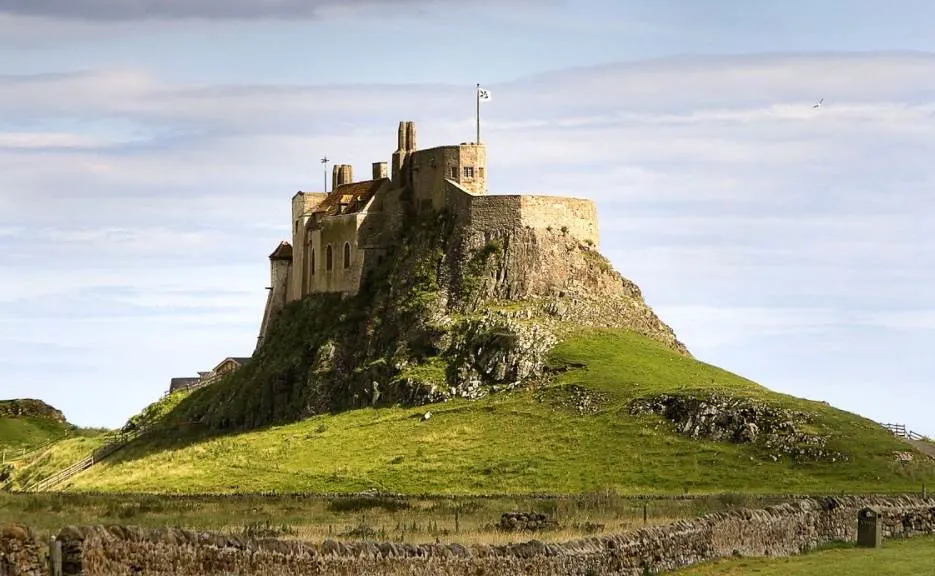
The castle didn’t suffer any damage from military operations and has been used as a storage facility and as the home of a garrison that was stationed in the region. Its elevated position made it a great lookout place for invaders near the border with Scotland.
The castle was acquired by a rich businessman named Edward Hudson in the early 20th century and transformed into a vacation house by architect Sir Edward Luytens between 1903 and 1906.
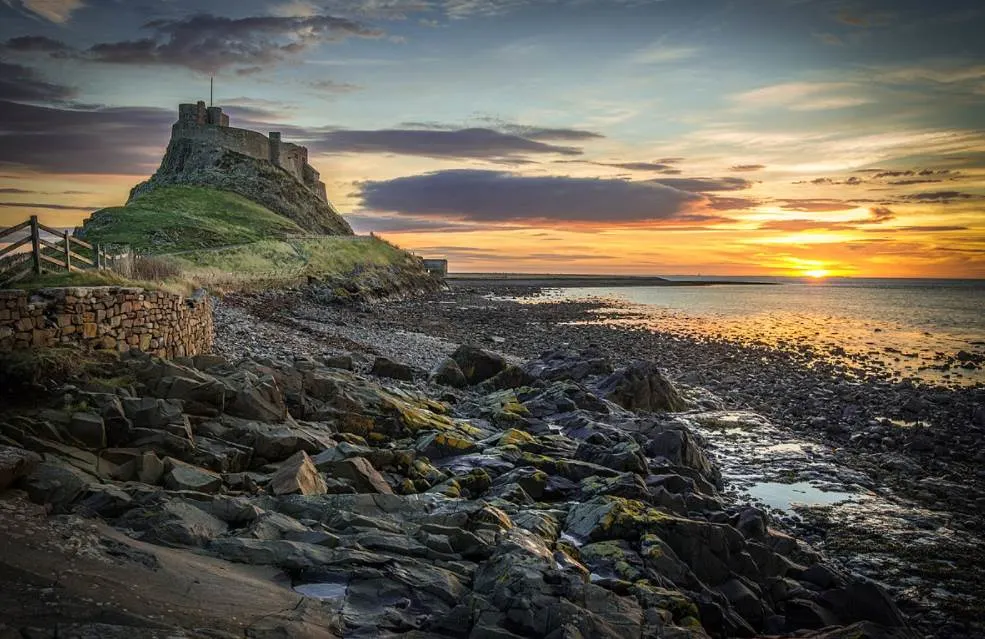
23. Carlisle Castle
Carlisle Castle is located in the city with the same name in the North West Region of England. It’s situated in an extremely strategic position near the border between England and Scotland.
What’s remarkable is that this area has been important since Roman times because Carlisle was originally founded by the Romand and referred to as Luguvalium back then. The castle was built on the remains of the Roman fort that originally stood here.
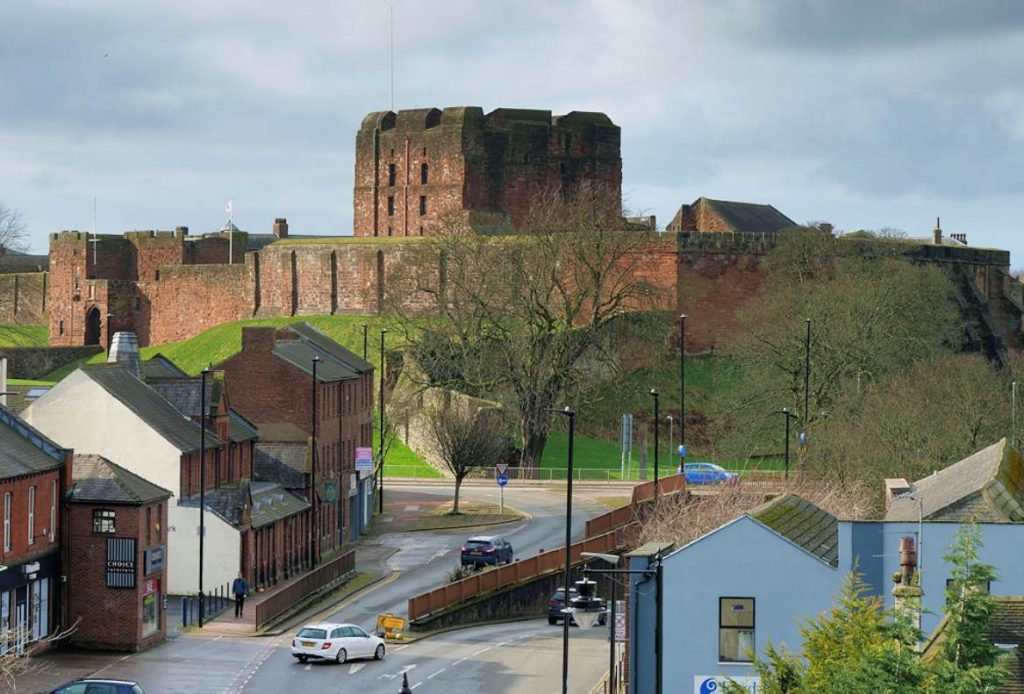
The castle was commissioned by William II? also known as William Rufus, the son of William the Conqueror who invaded England in the year 1066. The first stone castle on the site was erected in the early 12th century, including the keep.
Because of the castle’s location, it has been the most besieged castle in English history, switching hands multiple times for 700 years. It was also the final castle to be besieged in England during the Jacobite Rising of 1745.
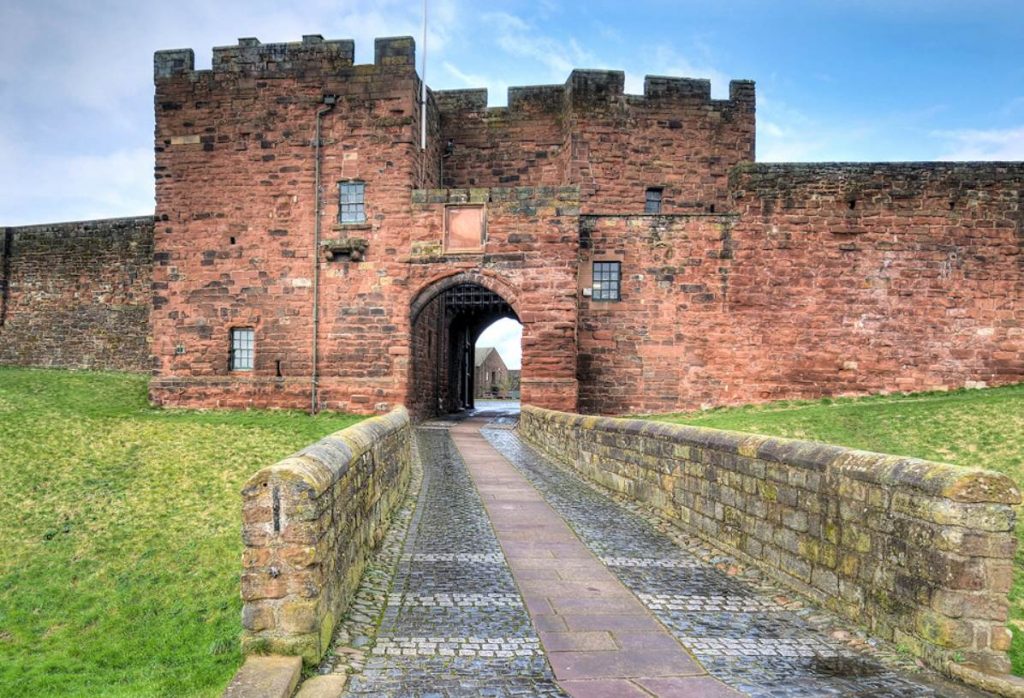
24. Skipton Castle
Skipton Castle is located in the market town with the same name in North Yorkshire in the northern part of England. It was built in a strategic location in the northern section of this relatively small town.
The original version of the castle was a motte-and-bailey structure built in the year 1090 by a Norman Baron named Robert de Romille. This was just a couple of decades after the Norman Conquest.

The original version was built with earthworks and wood which wasn’t enough to keep the invading Scots out. That’s why it was replaced with a stone version throughout the 12th century to offer better protection.
The castle saw major action during the English Civil War as it was able to withstand a 3-year-long siege as the only Royalist stronghold in northern England. Today, it’s still a private residence and a major tourist attraction in the lovely town of Skipton.
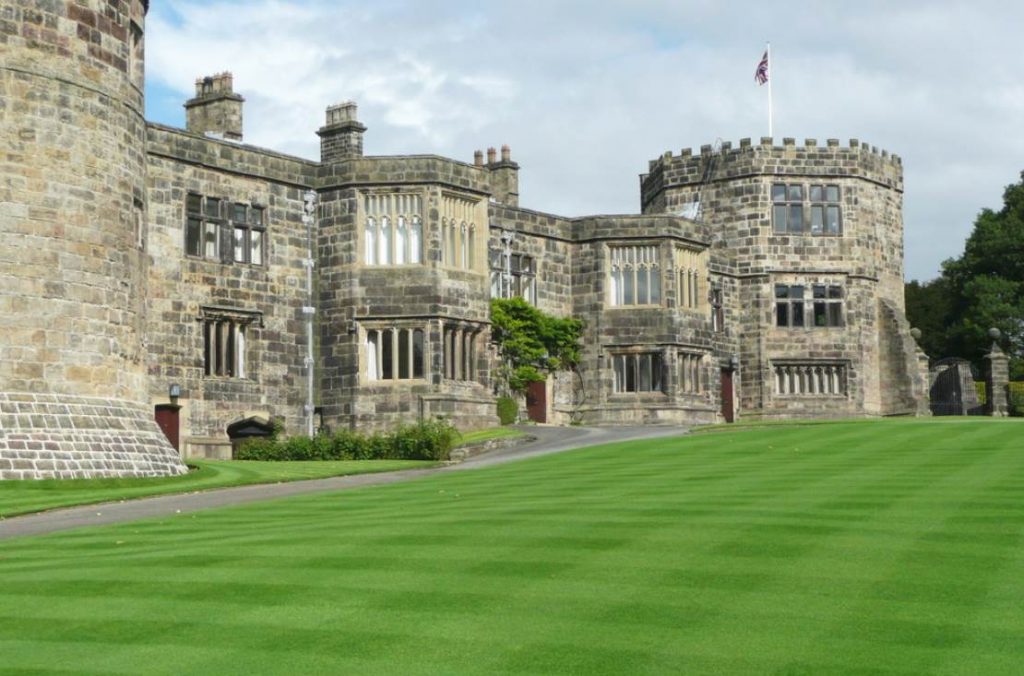
25. Norham Castle
Norham Castle is a ruined castle in Northumberland that overlooks the River Tweed. This river forms the boundary between England and Scotland in the utmost northeastern part of the country.
The castle was constructed by the Bishop of Durham in the 12th century and saw an incredible amount of action because of its strategic position near the border.
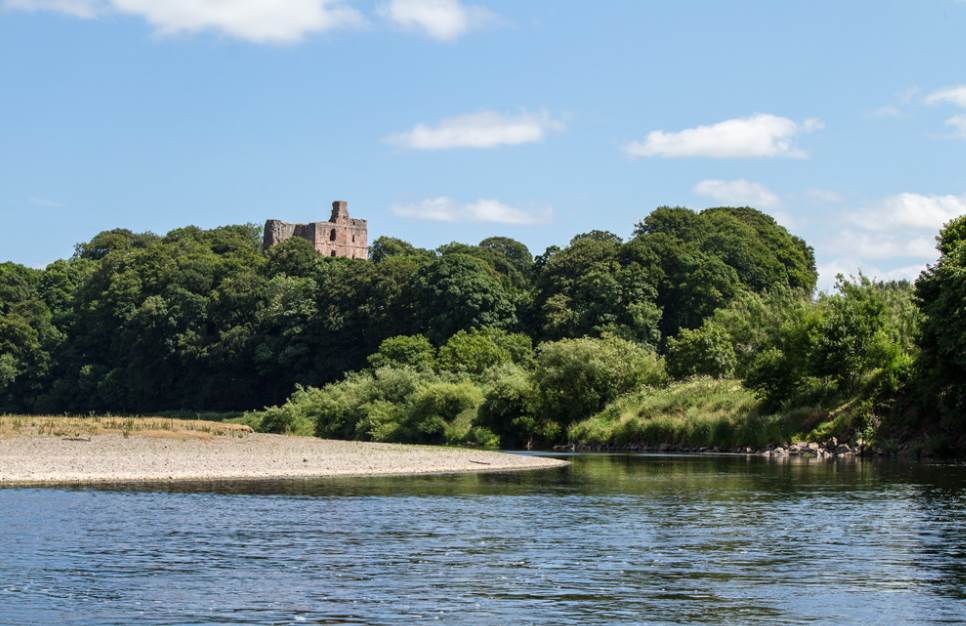
The medieval keep is the most prominent feature of the castle that still stands today and emphasizes the enormous strength of its fortifications.
Today, the castle is another tourist attraction in the region that is managed by English Heritage. It’s free to visit and open throughout the year (only on weekends during the winter months).
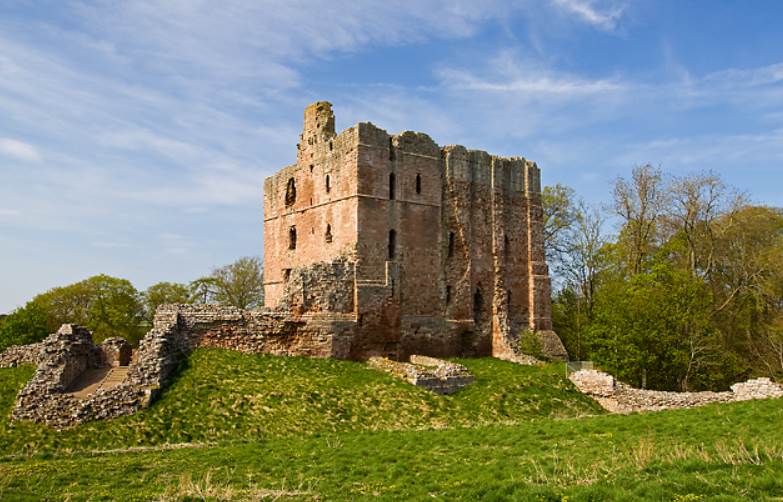
26. Canterbury Castle
Canterbury Castle is the third of the 3 royal castles that were constructed in the county of Kent in the South East of England, shortly after the Norman Invasion in 1066.
The original version of the castle was nothing more than a wooden motte-and-bailey structure commissioned by William the Conqueror.
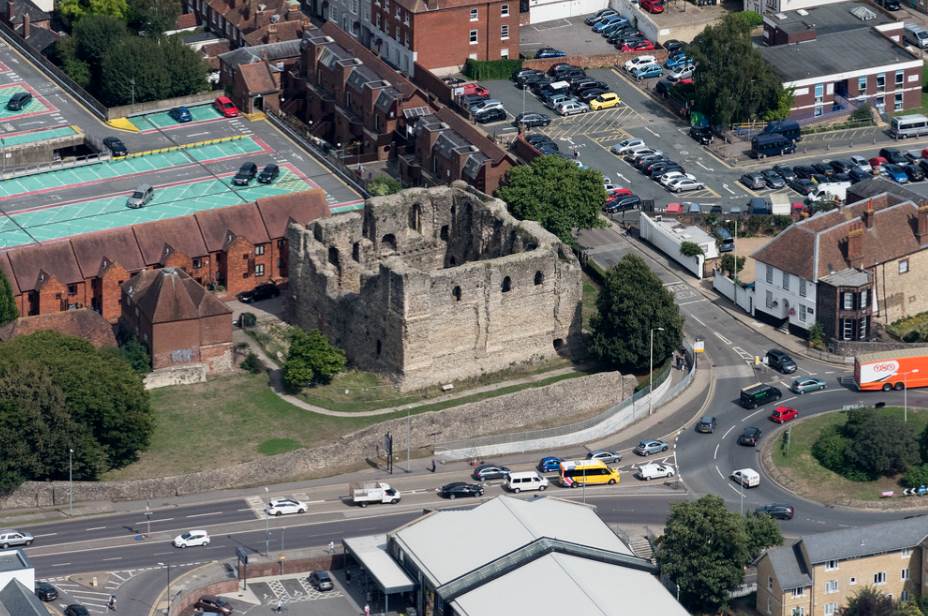
The stone castle was constructed in the early 12th century during the reign of King Henry I. It featured the fifth-largest keep in England upon completion.
Today, the castle is in such a state of ruin that it’s even closed to the public because of its poor masonry. Plans are made, however, to restore it and reopen it for visitors.
